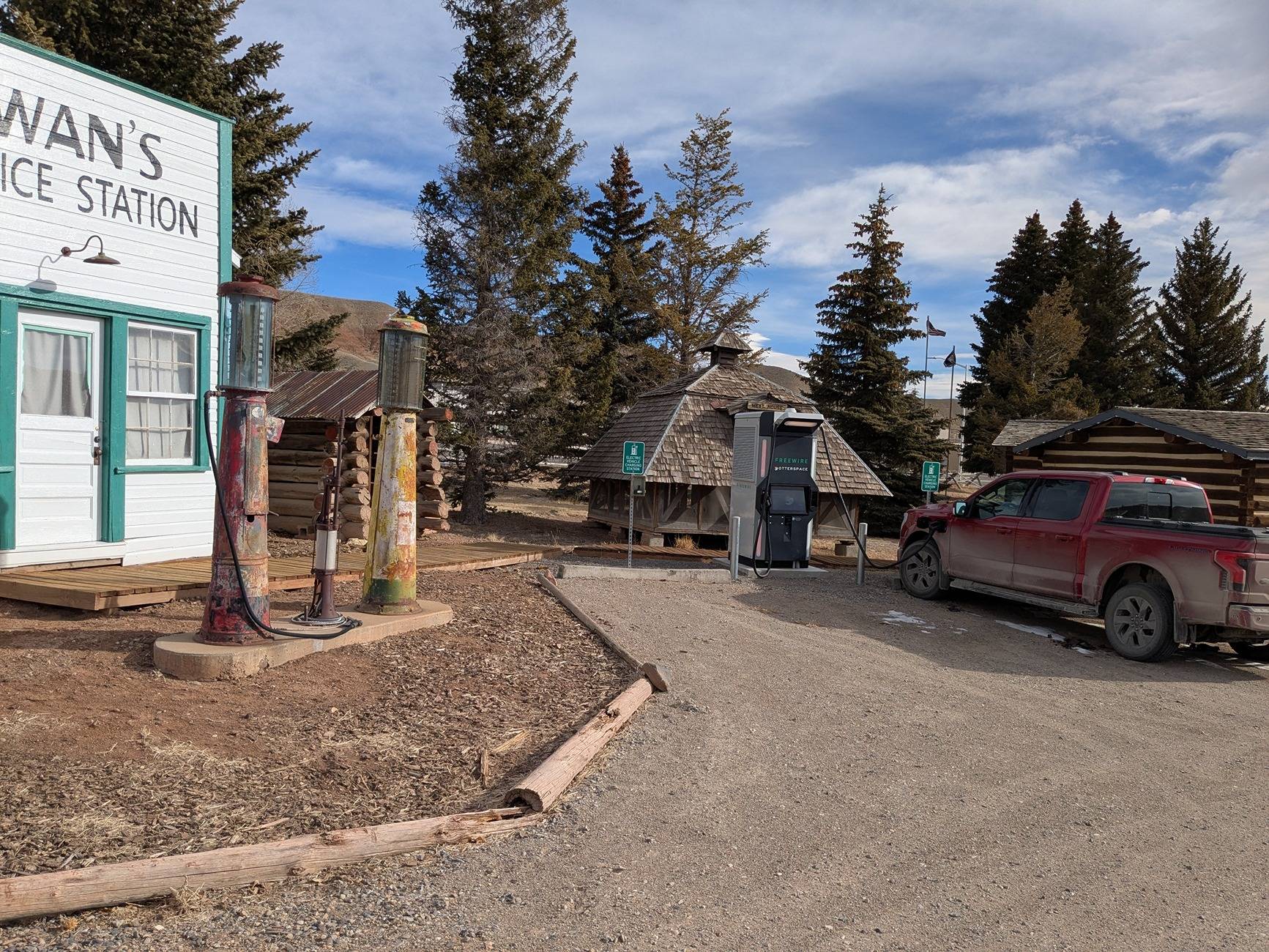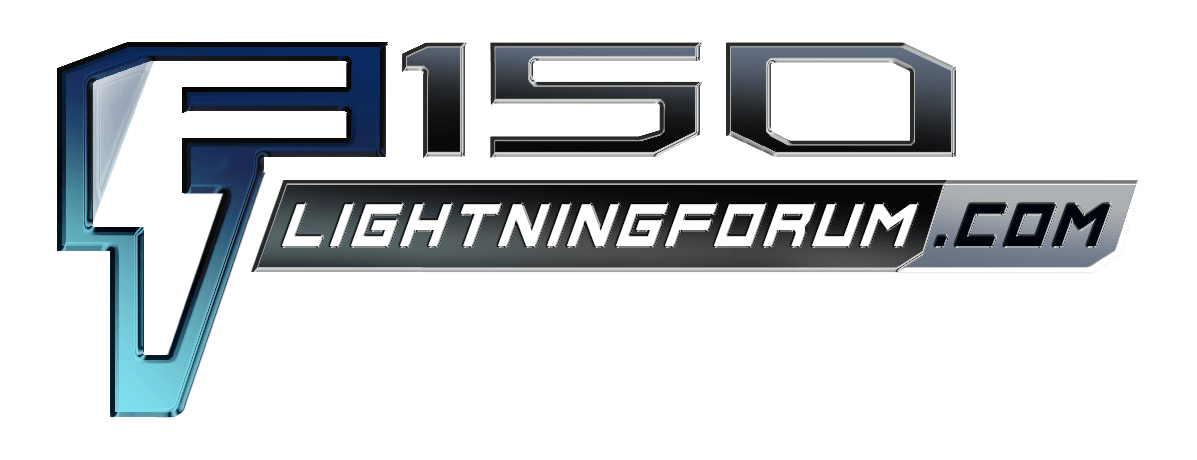RickLightning
Well-known member
- Thread starter
- #1
We've had a Mach-E since July 2021, and the Lightning since May 2023. Done a bunch of trips, we were at 26 states and 1 province before this trip. Now we've got 31 states under our belt.
Purpose of the trip was skiing - last year we did 7 days across 3 areas in 2 states, this year the plan was 15 days across 7 areas in 4 states (Mountain Collective pass). Unfortunately, plans changed.
Without an OBD adapter and Car Scanner, doing trips like this isn't for the faint of heart. Using Ford's Navigation and instrumentation is risky. Even using GoogleMaps with Android Auto doesn't work well, as it projects an end of trip SOC% that doesn't match what the vehicle says on the instrument panel. Using CarScanner, and doing MATH, one can project the exact charge needed at a particular station much more accurately. Seeing instant consumption really helps.
One of the very telling things is the impact of cold on the battery - i.e. kWh available. It's quite amazing. Here's a list:
Battery Temp SOC% kWh
89.6 85% 114.21
46.0 93% 114.20
Look at that difference! I recorded energy at shutdown and next morning ice cold too on a few days. Shutdown with 118kWh, woke up with 103kWh. As we drove, the kWh increased, but also decreased due to driving. Lowest battery temp I saw was 15 degrees.
Trip started out fine, we went up through Illinois, Wisconsin, Minnesota, and then North Dakota. We were prepared for the cold, and knew we'd take a range hit. Ended up with a 20mph headwind at one point, going from North Dakota into Montana. Some of these legs have no charging options, so you have to have the right amount of charge at the start, because you have to make the next charging spot (for example, from Billings, MT to Bozeman, MT). Knew we had to slow down, one leg is 150 miles and ABRP recommends 70mph max. We did 62 with no heat, and the hit the heat and did 65. Lowest efficiency we got on a leg was 1.2.
We learned that we were comfortable at Auto 1 and 64 degrees, whereas in the Mach-E it takes more like 67/68 and even then it's drafty. We wore lined pants, long sleeve shirts, and I had a fleece vest on (my wife was dressed similarly and sometimes had a blanket over her legs).
I was fairly confident that the truck would not precondition going to any fast charger, I proved that last March, and I was right. Until you get OTA update 10.0.1, you're SOL. My Mach-E used to precondition, then lost the capability, then gained it back with 10.0.1. That means that the first 10 minutes of each fast charge is spent devoting 8 to 10kW of energy to heat the battery - and you waste time at the charger until the speed climbs by the end of that 10 minutes. I was able to see that the Lightning battery pack retains heat during the drive, unlike the Mach-E, and each subsequent charge of the day devoted very little power to heating the battery.
The PLAN was to use Tesla SuperChargers unless I couldn't. Reasons - no waiting, lower cost (with membership) vs. EA (with membership), more likely that they work (all did, not one miss).
The trip was a 3 day drive, then 2 days in Bozeman skiing Big Sky, then driving down to Grand Targhee, Jackson Hole, then to Utah for Snowbasin and Alta, then to Colorado for Aspen and Arapahoe, then home. Trip was extensively planned, all hotels booked, ski areas reserved (a handful require them), and all chargers laid out.
On day 3 of skiing, I got injured. Basically fell and slammed into the mountain. I don't fall, been skiing for over 50 years, and I NEVER FALL. But somehow I did, and smashed and twisted both knees. Gingerly skied down, and iced the one knee (didn't realize I had hurt both). Next day my wife skied Jackson Hole while I contacted an orthopedic surgeon I know and laid out my symptoms. He immediately called me and said "you're done for the trip, maybe the season". Not a surprise given the level of pain I had. 4 to 6 week recovery at best.
Anyway, new plan, cancel everything (that took a lot of time), and plan a new route home from bumf*ck Idaho. This was through a national forest, using chargers by Otterspace twice, because there were no other options. We were trying to beat a major storm forecast to bring winds of 40mph, gusts over 60. We finally reached the highway early in the afternoon, and then had to deal with snow blowing over the road and icing it up (even though it wasn't snowing). The good news was that we had a huge tailwind at one point and got 2.1 for one long stretch, it was up to 2.4 at times. I never get 2.0 in the summer...
Because of the change in route, we were forced to also use EA chargers in Wyoming, which are 64 cents before discount (to 48 cents). That compares with my Tesla plan of 30 to 37 cents for the entire trip. That killed my cost per mile.
The other thing unique about this trip was that most of the hotels had no charging, or charge ridiculous prices like $3 per hour (for 4kW). So, I had to charge at night after dinner for 45 minutes or more, and then have a cold battery in the morning. Of the 9 hotel nights, we got charging at 2 of them. That's way off from our normal experience. North Dakota, Montana, and Wyoming aren't big on hotel charging. One of the chargers was 4.1kW per hour, which is near useless (but I'll take it).
We drove just under 3,800 miles, for a cost per mile of 23 cents, driven higher by EA's five charges and Otterspace. 13.5% of our charging was free, well below our norm of 2+ times that.
In comparison, last March we drove to California and back, over 5,000 miles. Warmer temps even though it was winter. 29% of our charging was free, and our cost per mile was 11.7 cents, almost exactly 1/2 this year's cost. Clearly free charging impacted that.
Really bummed we didn't get to ski all the areas. The good news was that we were able to visit 7 breweries, and try local beers at 3 other restaurants/tap houses. My UnTappd list grew, as did my gut.
Here's a picture of one of the Otterspace chargers.

Purpose of the trip was skiing - last year we did 7 days across 3 areas in 2 states, this year the plan was 15 days across 7 areas in 4 states (Mountain Collective pass). Unfortunately, plans changed.
Without an OBD adapter and Car Scanner, doing trips like this isn't for the faint of heart. Using Ford's Navigation and instrumentation is risky. Even using GoogleMaps with Android Auto doesn't work well, as it projects an end of trip SOC% that doesn't match what the vehicle says on the instrument panel. Using CarScanner, and doing MATH, one can project the exact charge needed at a particular station much more accurately. Seeing instant consumption really helps.
One of the very telling things is the impact of cold on the battery - i.e. kWh available. It's quite amazing. Here's a list:
Battery Temp SOC% kWh
89.6 85% 114.21
46.0 93% 114.20
Look at that difference! I recorded energy at shutdown and next morning ice cold too on a few days. Shutdown with 118kWh, woke up with 103kWh. As we drove, the kWh increased, but also decreased due to driving. Lowest battery temp I saw was 15 degrees.
Trip started out fine, we went up through Illinois, Wisconsin, Minnesota, and then North Dakota. We were prepared for the cold, and knew we'd take a range hit. Ended up with a 20mph headwind at one point, going from North Dakota into Montana. Some of these legs have no charging options, so you have to have the right amount of charge at the start, because you have to make the next charging spot (for example, from Billings, MT to Bozeman, MT). Knew we had to slow down, one leg is 150 miles and ABRP recommends 70mph max. We did 62 with no heat, and the hit the heat and did 65. Lowest efficiency we got on a leg was 1.2.
We learned that we were comfortable at Auto 1 and 64 degrees, whereas in the Mach-E it takes more like 67/68 and even then it's drafty. We wore lined pants, long sleeve shirts, and I had a fleece vest on (my wife was dressed similarly and sometimes had a blanket over her legs).
I was fairly confident that the truck would not precondition going to any fast charger, I proved that last March, and I was right. Until you get OTA update 10.0.1, you're SOL. My Mach-E used to precondition, then lost the capability, then gained it back with 10.0.1. That means that the first 10 minutes of each fast charge is spent devoting 8 to 10kW of energy to heat the battery - and you waste time at the charger until the speed climbs by the end of that 10 minutes. I was able to see that the Lightning battery pack retains heat during the drive, unlike the Mach-E, and each subsequent charge of the day devoted very little power to heating the battery.
The PLAN was to use Tesla SuperChargers unless I couldn't. Reasons - no waiting, lower cost (with membership) vs. EA (with membership), more likely that they work (all did, not one miss).
The trip was a 3 day drive, then 2 days in Bozeman skiing Big Sky, then driving down to Grand Targhee, Jackson Hole, then to Utah for Snowbasin and Alta, then to Colorado for Aspen and Arapahoe, then home. Trip was extensively planned, all hotels booked, ski areas reserved (a handful require them), and all chargers laid out.
On day 3 of skiing, I got injured. Basically fell and slammed into the mountain. I don't fall, been skiing for over 50 years, and I NEVER FALL. But somehow I did, and smashed and twisted both knees. Gingerly skied down, and iced the one knee (didn't realize I had hurt both). Next day my wife skied Jackson Hole while I contacted an orthopedic surgeon I know and laid out my symptoms. He immediately called me and said "you're done for the trip, maybe the season". Not a surprise given the level of pain I had. 4 to 6 week recovery at best.
Anyway, new plan, cancel everything (that took a lot of time), and plan a new route home from bumf*ck Idaho. This was through a national forest, using chargers by Otterspace twice, because there were no other options. We were trying to beat a major storm forecast to bring winds of 40mph, gusts over 60. We finally reached the highway early in the afternoon, and then had to deal with snow blowing over the road and icing it up (even though it wasn't snowing). The good news was that we had a huge tailwind at one point and got 2.1 for one long stretch, it was up to 2.4 at times. I never get 2.0 in the summer...
Because of the change in route, we were forced to also use EA chargers in Wyoming, which are 64 cents before discount (to 48 cents). That compares with my Tesla plan of 30 to 37 cents for the entire trip. That killed my cost per mile.
The other thing unique about this trip was that most of the hotels had no charging, or charge ridiculous prices like $3 per hour (for 4kW). So, I had to charge at night after dinner for 45 minutes or more, and then have a cold battery in the morning. Of the 9 hotel nights, we got charging at 2 of them. That's way off from our normal experience. North Dakota, Montana, and Wyoming aren't big on hotel charging. One of the chargers was 4.1kW per hour, which is near useless (but I'll take it).
We drove just under 3,800 miles, for a cost per mile of 23 cents, driven higher by EA's five charges and Otterspace. 13.5% of our charging was free, well below our norm of 2+ times that.
In comparison, last March we drove to California and back, over 5,000 miles. Warmer temps even though it was winter. 29% of our charging was free, and our cost per mile was 11.7 cents, almost exactly 1/2 this year's cost. Clearly free charging impacted that.
Really bummed we didn't get to ski all the areas. The good news was that we were able to visit 7 breweries, and try local beers at 3 other restaurants/tap houses. My UnTappd list grew, as did my gut.
Here's a picture of one of the Otterspace chargers.

Sponsored


